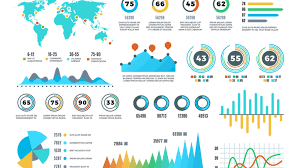The Power of Visualizations in Achieving Your Goals
Visualizations are a powerful tool that can help individuals manifest their dreams and goals into reality. By creating vivid mental images of the outcomes they desire, people can tap into the power of their subconscious mind to drive positive change in their lives.
When you visualize your goals, you are essentially programming your mind to focus on what you want to achieve. This process helps align your thoughts, beliefs, and actions with your desired outcomes, making it more likely for you to succeed.
Research has shown that visualizing success can enhance motivation, boost confidence, and improve performance in various areas such as sports, business, and personal development. Athletes often use visualization techniques to mentally rehearse their movements and strategies before competitions, leading to improved execution and results.
Furthermore, visualizations can help individuals overcome obstacles and challenges by creating a sense of clarity and direction. By visualizing themselves successfully navigating difficult situations or achieving their goals despite setbacks, people can build resilience and determination to keep moving forward.
It’s important to note that visualizations work best when combined with action. While visualizing your goals can set the stage for success, taking concrete steps towards achieving them is crucial. By combining visualization with strategic planning and consistent effort, individuals can create a powerful recipe for achieving their aspirations.
In conclusion, visualizations are a valuable tool that can empower individuals to unlock their full potential and turn their dreams into reality. Whether you’re aiming for personal growth, professional success, or improved well-being, incorporating visualization techniques into your daily routine can be a game-changer in helping you reach your goals.
9 Essential Tips for Creating Effective Data Visualizations
- Choose the right type of visualization for your data
- Keep it simple and avoid clutter
- Use appropriate colors to convey information effectively
- Label your axes clearly for better understanding
- Ensure consistency in design elements across multiple visualizations
- Provide context and explanations to aid interpretation
- Use whitespace strategically to improve readability
- Make use of interactive features for more engaging visualizations
- Test your visualizations with potential users for feedback
Choose the right type of visualization for your data
When utilizing visualizations to present data effectively, it is crucial to select the appropriate type of visualization that best represents the information you want to convey. Different types of visualizations, such as bar graphs, pie charts, line graphs, and heat maps, serve distinct purposes and are suitable for different kinds of data. By choosing the right visualization format that aligns with the nature of your data—whether it’s comparing values, showing trends over time, or highlighting relationships—you can enhance clarity and understanding for your audience, making the data more accessible and impactful.
Keep it simple and avoid clutter
When practicing visualizations, it is essential to keep it simple and avoid clutter. By focusing on a few key images or scenarios related to your goals, you can enhance the clarity and effectiveness of your mental imagery. Simplifying your visualizations helps prevent overwhelm and allows your mind to hone in on the most important aspects of what you want to achieve. Clear, concise visualizations can create a stronger connection between your thoughts and actions, increasing the likelihood of manifesting your desired outcomes.
Use appropriate colors to convey information effectively
When utilizing visualizations, choosing the right colors to convey information effectively can significantly enhance the impact of your message. Colors have the power to evoke emotions, convey meaning, and attract attention. By selecting an appropriate color palette that aligns with the content and context of your visualization, you can create a more engaging and memorable experience for your audience. Whether you’re highlighting key data points, creating visual hierarchy, or establishing a specific mood, thoughtful color choices can help communicate information clearly and effectively.
Label your axes clearly for better understanding
Clear labeling of axes is a crucial tip when creating visualizations as it enhances the understanding of the data presented. By clearly labeling the x-axis and y-axis, viewers can quickly grasp the variables being represented and interpret the information accurately. This simple practice not only improves the overall clarity of the visualization but also helps avoid confusion and misinterpretation, ensuring that the message conveyed through the data is effectively communicated to the audience.
Ensure consistency in design elements across multiple visualizations
Ensuring consistency in design elements across multiple visualizations is essential for creating a cohesive and professional look. By maintaining uniformity in color schemes, typography, layout, and other visual components, you not only enhance the overall aesthetic appeal but also improve the readability and comprehension of your visualizations. Consistent design elements help establish a visual identity for your work, making it easier for viewers to recognize and associate your brand or message. Whether you are creating charts, graphs, infographics, or presentations, adhering to a consistent design style can elevate the impact of your visualizations and effectively communicate your data and insights.
Provide context and explanations to aid interpretation
Visualizations are a powerful technique that involves creating detailed mental images of desired outcomes to help individuals achieve their goals. By visualizing success in a specific context, such as a challenging situation or a future achievement, individuals can enhance their motivation and confidence. This visualization process serves as a form of mental rehearsal, allowing individuals to mentally prepare for success and overcome obstacles more effectively. Providing context and explanations when using visualizations can aid in interpreting the images created, reinforcing the connection between the desired outcome and the necessary actions to make it a reality. By clearly understanding the significance of each visualization within its context, individuals can harness the full potential of this technique to drive positive change in their lives.
Use whitespace strategically to improve readability
Using whitespace strategically is a simple yet effective tip to enhance the readability of visualizations. By incorporating ample space between elements such as text, images, and graphics, you can create a clean and organized layout that allows the viewer’s eyes to navigate smoothly. White space not only improves the overall aesthetics of the visualization but also helps in emphasizing key information and reducing cognitive overload. When implemented thoughtfully, whitespace can significantly enhance the clarity and impact of your visualizations, making them more engaging and easy to understand for your audience.
Make use of interactive features for more engaging visualizations
Utilizing interactive features can significantly enhance the effectiveness of visualizations by creating a more engaging and dynamic experience for users. By incorporating elements such as tooltips, filters, drill-down capabilities, and animations, interactive visualizations allow individuals to explore data in a more personalized and immersive way. These features not only make the information more accessible and understandable but also encourage active participation and deeper engagement with the content. Interactive visualizations can help users uncover insights, discover patterns, and gain a deeper understanding of complex data sets, ultimately leading to more informed decision-making and impactful outcomes.
Test your visualizations with potential users for feedback
Testing your visualizations with potential users for feedback is a crucial step in the design process. By seeking input from your target audience, you can gain valuable insights into how effective your visualizations are in conveying the intended message or achieving the desired impact. User feedback can help identify areas for improvement, ensure clarity and relevance, and enhance user engagement. By incorporating feedback from potential users early on, you can refine your visualizations to better meet their needs and expectations, ultimately increasing the likelihood of success in achieving your goals.



